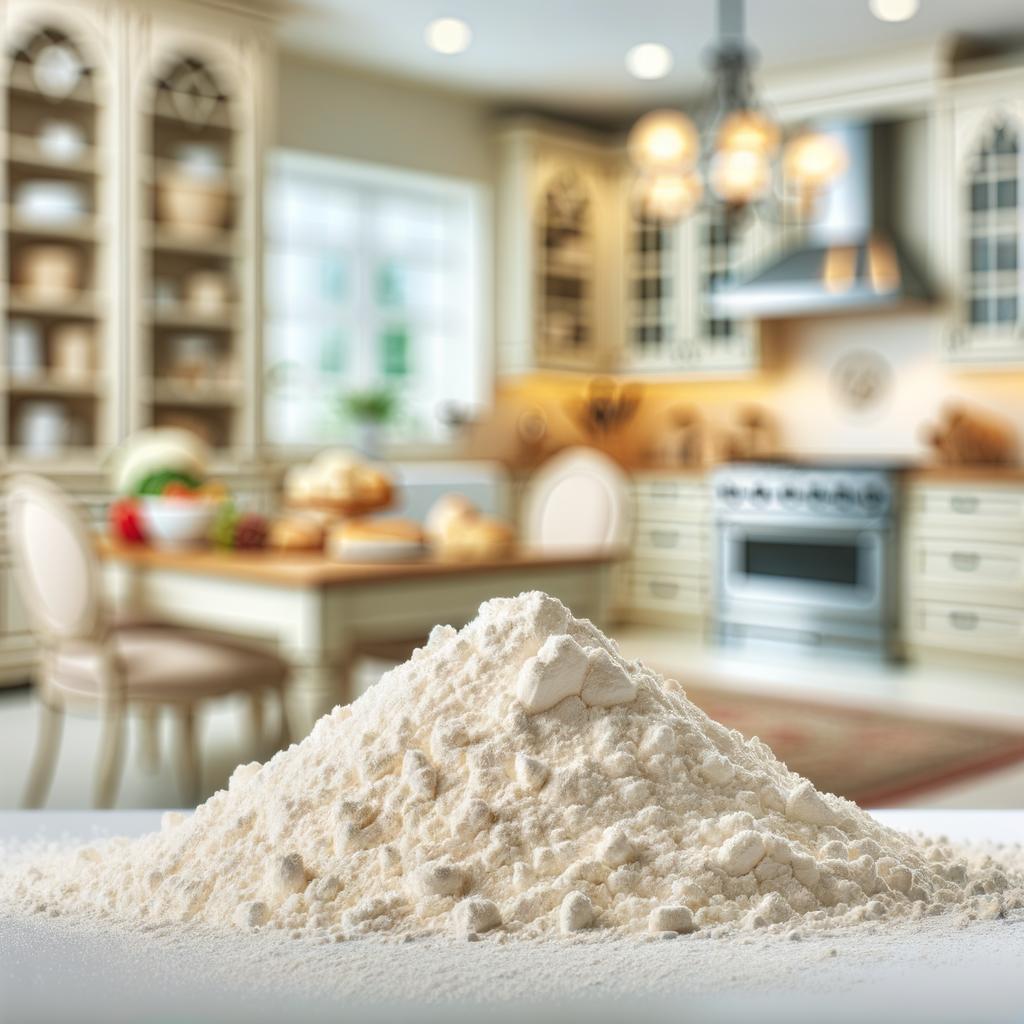Cake Flour

Description
Cake flour, a darling of the baking world, is a finely milled flour made predominantly from soft winter wheat. It's as delicate as a snowflake, with a texture that's often compared to baby powder. Its off-white hue is reminiscent of a winter morning, and it possesses a faintly sweet and subtly earthy aroma. The magic of cake flour lies in its low protein content, which is significantly lower than all-purpose flour. This unique characteristic allows it to produce baked goods with a tender crumb and a heavenly lightness, setting it apart from its flour family members.
Primary Uses
Cake flour is the unsung hero of the confectionery world, playing a starring role in creating the lightest and fluffiest of pastries. It is the secret ingredient behind the ethereal texture of angel food cake, the tender crumb of madeleines, and the melt-in-your-mouth quality of delicate sponge cakes. Its use isn't limited to cakes alone; it's also the preferred choice for certain types of cookies, biscuits, and muffins. In some cultures, it's even used to make certain types of noodles. Beyond the culinary realm, it's sometimes used in DIY beauty treatments as a natural skin exfoliator.
History
The history of cake flour is intertwined with the evolution of baking itself. It came into prominence during the 19th century as baking became more of a science. The discovery that soft wheat produced a flour that resulted in lighter, softer baked goods revolutionized the industry. Over time, cake flour became a staple in kitchens worldwide, and its popularity has never waned. There's a charming myth that says cake flour was the secret ingredient in the cakes served at royal weddings, contributing to their legendary lightness and taste.
Nutritional Information
Cake flour, while not a nutritional powerhouse, does offer certain benefits. It's a source of complex carbohydrates, which provide the body with sustained energy. It also contains small amounts of essential nutrients like iron, calcium, and B vitamins. However, it's lower in protein and fiber compared to whole wheat flour. Moderation is key when consuming foods made with cake flour, as it's also higher in calories. Nonetheless, when used as part of a balanced diet, cake flour can contribute to the rich tapestry of our culinary experiences.

